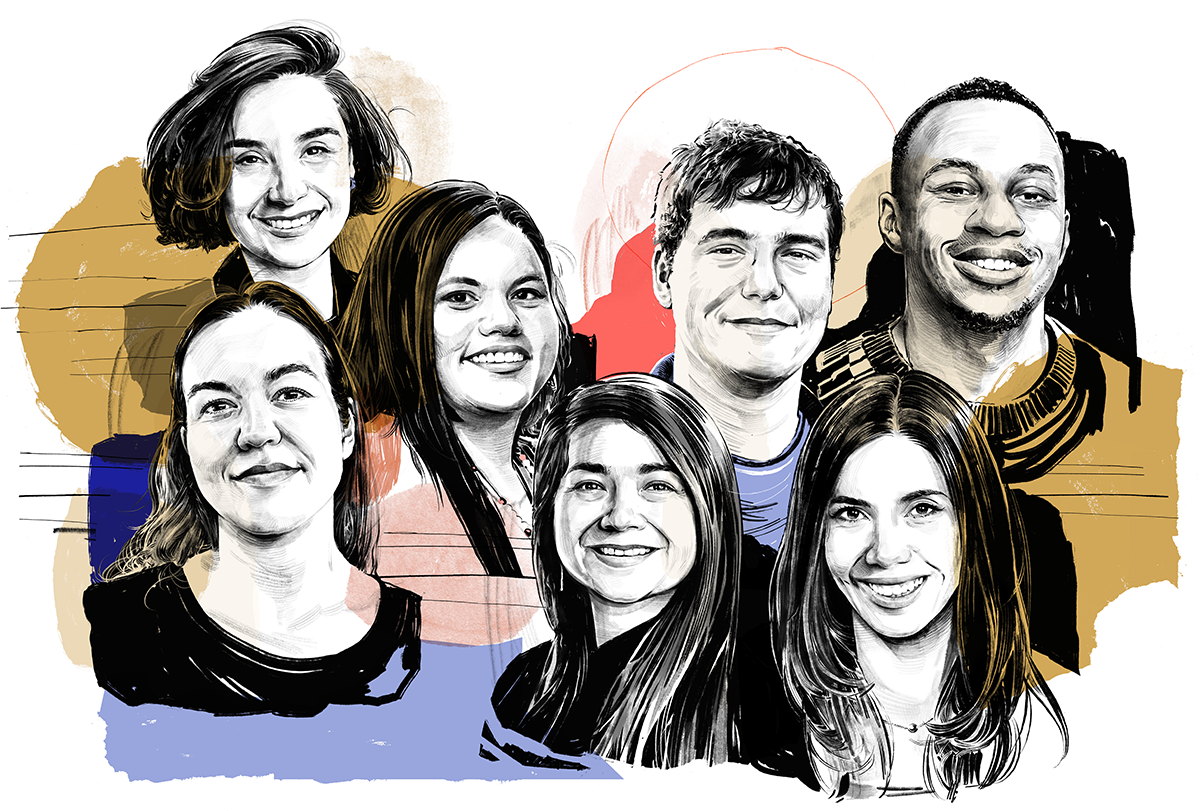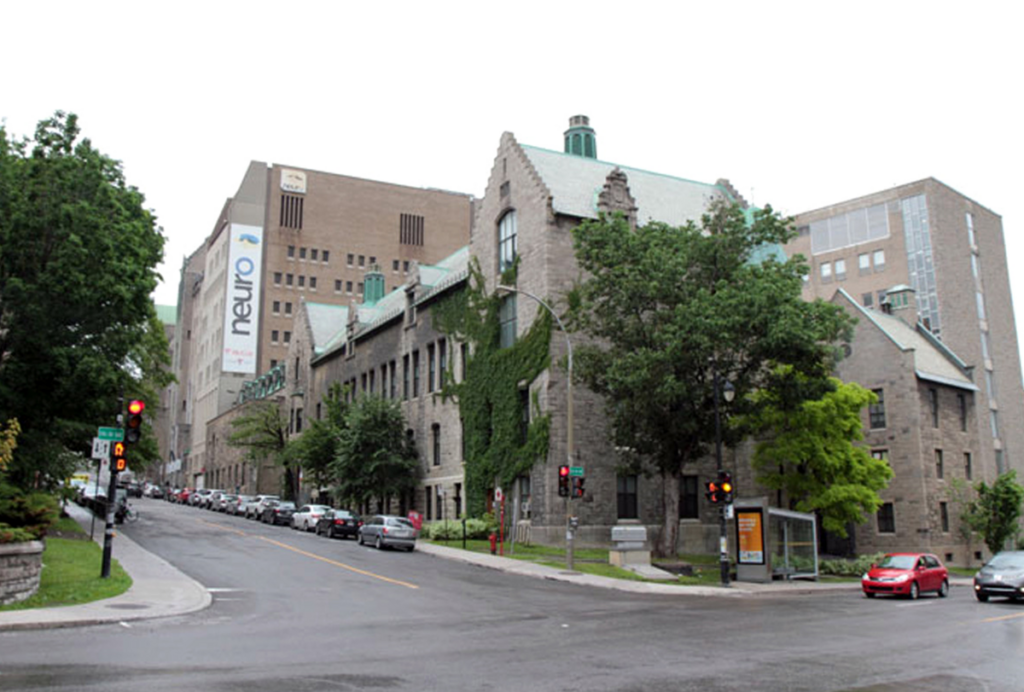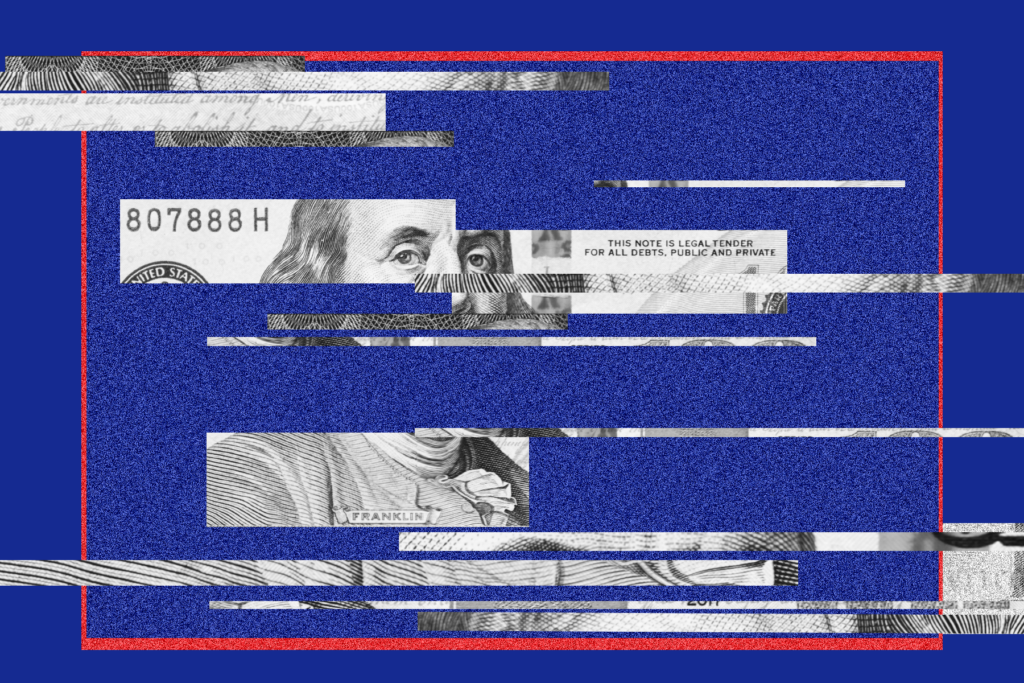
‘We still exist’: How four neuroscience advocacy groups are navigating federal DEI funding cuts
Trainees from underrepresented backgrounds are losing pillars of support in the current funding climate. Grassroots mentorship organizations are stepping in to continue championing early-career researchers.
Since President Trump’s executive order earlier this year that aimed to “terminate all ‘diversity,’ ‘equity,’ ‘equitable decision-making’ … mandates, requirements, programs, and activities,” various federal agencies have abruptly cancelled numerous diversity-related grants and training programs. Within neuroscience, the impact has been especially profound.
The precarity of diversity-focused initiatives has caused a wave of uncertainty for trainees, especially those from underrepresented backgrounds. Young researchers say they are scrambling to find support as more and more institutional mentorship organizations lose their federal funding.
Grassroots organizations centered around supporting marginalized students are working hard to fill this void.
The majority of these trainee-led programs do not rely directly on U.S. federal funding, but they still feel the ripple effects of the cuts. Leaders report that government platforms have erased public talks about their groups, communication with academic institutions has dried up, and they have had to step up their efforts to cover lost ground, often with limited support.
The Transmitter spoke with seven leaders of diversity initiatives within neuroscience about what these changes mean for their organizations.
These interviews have been edited for length and clarity.
The Transmitter: Does Black In Neuro receive any U.S. federal government funding or support from institutions that may receive government funding?
De-Shaine Murray: Black In Neuro does not currently receive government support through grants, but it has received support from academic institutions, which are probably derived from governmental funds.
TT: How have conversations with these academic institutions shifted since the federal government’s deemphasis on diversity, equity and inclusion (DEI)?
D-SM: I would say that it’s been pretty quiet. We expected that people were going to batten down the hatches and get a lot more quiet about where they were going to be giving or not giving. In a lot of ways, we anticipated this. I have been a part of Black In Neuro for five years, since its beginning in 2020. Throughout that time, we’ve seen ebbs and flows in funding. We are very much aware that these phases of funding can change on a whim. I feel like, irrespective of the climate, we’ve always been in a position where we’ve tried to make sure that we’re able to weather that storm.
A lot of conversations internally have been more about how we’re going to behave as an organization, rather than with respect to institutions. Usually, the vast majority of our money and sponsorships is for the annual Black In Neuro week, which hasn’t happened yet, so we’re anticipating a drop-off in support for that event. As a result, we have already begun making contingency plans.
TT: Could you elaborate on how the recent DEI policy changes have affected members of Black In Neuro?
D-SM: I would say the impact on our members and just the wider community has been pretty stark. This includes friends and colleagues who are in the federal government who we know have lost jobs, various scholars at the graduate and postdoctoral stage who have lost funding … There’s people who are at transition periods who are trying to navigate the litany of hiring freezes, so essentially being at a position where they’re looking to defend their Ph.D. but not knowing where they’re going to go afterward. I know of people, personally and even within our organizing team, who have had offers rescinded after having a verbal agreement on a postdoc position.
TT: How is Black In Neuro supporting its affected members?
D-SM: One of the key ways we are supporting members is through sharing our best practices with each other internally. We’re doing that directly through our mentorship program. We are also currently building up a lot of resources, like resources for applications. We can then share these with the community, either through our newsletter or our website, so that we can keep things ticking along. But in the longer term, I hope that Black In Neuro will soon be in a position to provide some direct support. I don’t feel that we should take the place of the government in that respect, and it’s hard to do that with a group that works on a volunteer basis, but there is some critical need right now to ensure that we don’t lose people within the scientific sphere. Academia is the primary way you train the next generation of scientists, and I know a lot of people who are reconsidering their goals and where they want to be based on the political climate right now.
TT: How do you see the future of diversity initiatives and organizations in neuroscience evolving through this administration and beyond it?
D-SM: I would like to see a lot more solidarity. Because of the funding cuts, we might be in a situation where diverse advocacy organizations are pitted against each other, because there are fewer resources. So everyone will be trying to get their piece of the pie. But there’s a lot that can be done together between the various volunteer and organizing groups that exist within neuroscience. We have to persist, especially within neuroscience. If we don’t, we will have researchers who will be missing from the story. It will be an incomplete science.
The Transmitter: Has Colors of the Brain experienced any ripple effects from the executive order deemphasizing DEI?
Maribel Patiño: We have noticed that a lot of other programs around Colors of the Brain have been cut. Colors of the Brain used to collaborate closely with the University of California, San Diego’s (UCSD) STARTneuro, which is both a summer research program and a year-long program for community-college transfer students who are interested in neuroscience. Colors of the Brain used to host a symposium at the end of the summer that invited STARTneuro scholars, and they would present at the symposium as well. STARTneuro was funded by a National Institutes of Health grant. The program’s funding got cut, and now it no longer exists in the same capacity. It happened quite suddenly. There are other summer research programs at UCSD that no longer exist as well, for similar reasons.
The way that it has impacted Colors of the Brain is that this year, we got a lot more applicants to our summer research program because we are one of the few programs that does not rely on federal funding. We actually decided a few years ago to not be a UCSD organization for fear that something like this might happen. So now we’re a 501(c) nonprofit. We’re separate from UCSD, and that’s one of the ways that we don’t have to be in communication with the university in terms of them allowing us to exist. When we became a nonprofit organization, we did have lawyers helping us, and we’re very thankful to them for setting us up so that Colors of the Brain is unaffected right now.
Christian Cazares: Initially, Colors of the Brain asked, “Can we tap into university resources?” For our first cohort, we had our students take part in an umbrella program that UCSD has with several undergraduate research initiatives. They weren’t well organized. So we decided not to introduce a headache into our lives by trying to coordinate with somebody else. From 2021 onward, Colors of the Brain has become independent in the sense that we’re not UCSD-affiliated. Rather, UCSD is the site where our scholars’ research takes place.
TT: How is Colors of the Brain trying to support students who may no longer have support systems or programs in place?
CC: We have a lot of people who apply to be a part of Colors of the Brain. We had 80 people apply, but only 8 of them are going to be accepted to the program. One adjustment that we are doing is, before we select the awardees, we’re going to have a social for all the people who were finalists but did not end up receiving the award. We are hoping that this is a way that they can stay involved with the program. The finalists may not necessarily have access to mentors, so we wanted to host a face-to-face social event where they could meet the other members of Colors of the Brain and could ask us about being in neuroscience.
MP: We hope to go back to the roots of the organization. In the past, Colors of the Brain was unfunded, and we didn’t have the ability to provide a summer fellowship to students. It was purely a mentorship initiative, where we had workshops that centered around the question of, “How can we give information that took years to gather to somebody else who might not have it?” We still want to continue that component of Colors of the Brain, which is separate from having financial support. We still strongly believe that financial support is one small component of getting the students on track. So if someone doesn’t get the financial support, because we’re limited on that, what can we still offer them?
TT: How do you see the future of diverse initiatives and organizations in neuroscience evolving?
MP: I think organizations will become much more grassroots oriented. That’s what Colors of the Brain has been for a while. It has been graduate students doing this work for free. Even when we received funding, we’ve never quite used that funding to pay ourselves. We tried it for a bit, and then after a while, most of the grad students said that they would rather use that money to pay for an additional student to participate in the program. We have to consider what’s going to be more impactful: Colors of the Brain members getting maybe $200 total over the summer or someone getting funding and potentially changing their entire life and career?
CC: I have very strong opinions on this, which I think some of my colleagues will find controversial. If you have directly benefited from government initiatives that support diversity, then you are literally the only person who can carry those initiatives forward in these times.
The reason I say that this is controversial is because some people might think, “We’re not compensated for it. It’s not my responsibility.” I agree, but what’s the alternative? Only people who come from diverse backgrounds can mentor students from diverse backgrounds in a culturally sensitive, relevant way. Ultimately, these are your communities. Maribel and I are really proud of the fact that Colors of the Brain has cultivated people who volunteer because they want to, not because they are getting something out of it. This is a call to action. If you’re a principal investigator right now, or a postdoc or a grad student who has benefited immensely from diversity initiatives that are now defunct, it’s really up to us.
MP: If we don’t do it, then who’s going to do it? If we all say, “Well, I’m not going to do it unless I’m compensated,” then the reality is that nobody’s going to do it, and the people who are going to suffer are going to be the young trainees. Also, if we do not speak out now, if everyone stays quiet about these initiatives, then what’s going to happen is that these programs are going to be lost, and then it’s going to seem like they never existed. In addition to acknowledging that these programs are being cut right now, we need to ask, “What can we do about it?”
The Transmitter: How has Natives in Neuro been affected by the federal government’s deemphasis on DEI efforts?
Maeghan Murie-Mazariegos: With Natives in Neuro being a budding organization, the government’s deemphasis hasn’t really had an impact on us, other than the lost funding opportunities. But as an organization of Native Americans, we do hold a special relationship with the government. As Indigenous people, we hold sovereign nations that are entrusted by the U.S. government. We hold the same status as any other entity, whether it comes to relationships with states, the government itself or other foreign countries. By taking any kind of action against programs that support us, it’s actually infringing on treaty rights, and it’s essentially illegal.
Ashley Bourke: To add on to that, some members, due to their funding or their academic positions, feel like their involvement with Natives in Neuro has been affected out of fear of potential repercussions. Some members sense that if they are receiving federal funding, then they are not supposed to be engaging in any of these types of activities.
TT: As a newer organization, what has it been like navigating neuroscience at this particular time?
AB: It’s a pity that this is occurring right now, because Natives in Neuro is trying to grow. It’s hard to find each other, get connected and build this group. To have these administrative changes happening at this time when we’re trying to build the group has, I think, put a damper on things. It felt like we had our foot on the gas for a while and were just starting to really build out the organization. Now it’s like we put on the brake a little bit.
But we don’t want to lose sight of how important this group is. We may be small, but we are mighty. My hope is that in the next three and a half years, perhaps we won’t achieve all of these organizational milestones that we initially imagined, but the organization will survive.
MM-M: I have faith that we will continue to grow our community. I see that more people are kind of awakening because these government changes are drawing attention to the fact that we really do need diversity. We really do need to recognize how this nation was built between the people. With that, I aspire to see the group continuing to grow and provide resources and methods that make it easier for us to connect. Despite this temporary hurdle, I think we will come back stronger and better than ever.
TT: Last November, you did an Office of Programs to Enhance Neuroscience Workforce Diversity (OPEN) Stage webinar with the National Institute of Neurological Disorders and Stroke (NINDS). What is the status of this recorded webinar today?
AB: That webinar has been totally scrubbed from the internet. I checked in February, and it was no longer highlighted on NINDS’ web page, but I could still find the recording on YouTube. Just today I looked, and I don’t see the webinar on their YouTube channel either. I don’t see it anywhere.
That work was highlighting our career journeys and Natives in Neuro. For us board members presenting, it’s really sad to see, because that webinar was tied into one of our organizational goals: to get the word out about our group. It’s really disheartening, and sad to see a 403 “Access Denied” error message. It’s sort of like a metaphor in a way. But we are still here. We still exist.
The Transmitter: Neuro Latine is a graduate-student-led organization that does not receive U.S. federal funding. How have Neuro Latine’s funding prospects shifted since the executive orders around DEI?
Minerva Contreras: Initially, we talked about asking our own graduate programs for support. There are some specific mechanisms in place to do this. For example, my program at UCSD has supported similar initiatives. It’s a little bit complicated, because Neuro Latine is not a university-based organization. It’s four people from four different programs in four different states coming together to create one group. But when we talked about funding, we still considered our graduate programs. However, graduate programs are now shifting their priorities when it comes to their budget, including cutting admissions by half or more. So that’s definitely no longer an option anymore for Neuro Latine. At the moment, our funding has come from professors’ donations and is enough to cover the goals we feel we can work on based on our time and availability. It’s definitely discouraging, but we know there are other options, and we’re going to leverage our community as much as we can to fill that void.
Fernanda Juarez Anaya: I think right now it might be hard to get funding, especially with everything happening in the government, but one of Neuro Latine’s main goals is to empower our community. Academia can often feel quite lonely, and to just know that there are others like me in the field helps me to feel less lonely, and I think that is true of our members as well.
TT: What advice would you give to early-career researchers or students who are trying to navigate neuroscience at this time?
MC: I’m a “glass half full” kind of person. I can’t help it. I’ve always been this way. I think it’s part of being resilient. I think we’re going to come out of this period stronger than ever because those of us who remain in academia are people who are determined to carve a path for people like us. Even though it’s a time of increasing systemic barriers, it’s also a time of community coming together. We will have to rely on our communities’ strength and realize that together we can do a lot more. My advice to early-career researchers is to keep fighting the good fight. Don’t give up.
FJA: There’s a phrase that I learned when I went to a conference for diversity in neuroscience. It is a phrase that changed my brain chemistry when I heard it, and it was: “You belong.” That was it. Hearing that phrase at this conference had such a positive impact on me, because I was surrounded by neuroscientists who looked like me and came from similar backgrounds. Our roots are our superpower. Thanks to where we’re from, to our experiences, to being diverse and a minority, we have learned so much, and we bring so much to the table. We need to be reminded that we belong. A lot of people, especially right now, don’t want to have diversity in schools and in programs, but we need to remind each other that that’s what makes us special.
If you are part of any mentorship initiatives, share them to be considered for our mentorship directory. Contact The Transmitter at [email protected].
Recommended reading

Inclusivity committee disbands in protest at Canadian neuroscience institute

Black and women researchers are less likely to hold three or more NIH grants simultaneously

AI-assisted coding: 10 simple rules to maintain scientific rigor
Explore more from The Transmitter

Exclusive: NIH nixes funds for several pre- and postdoctoral training programs

NIDA shutters diversity fellowship program, axes active awards
